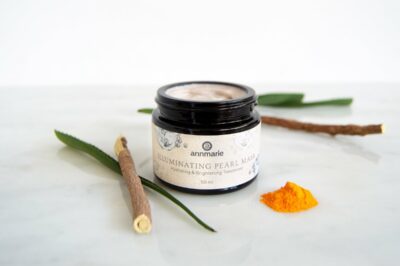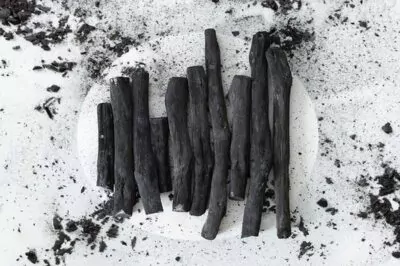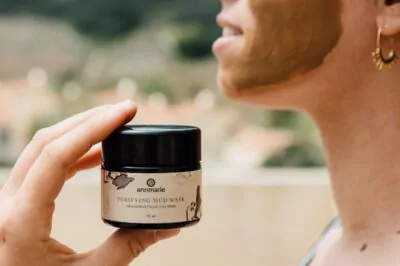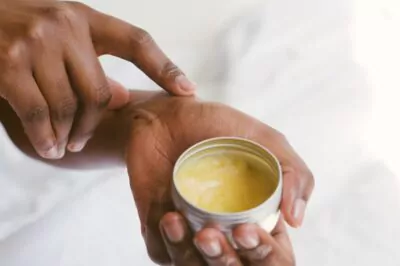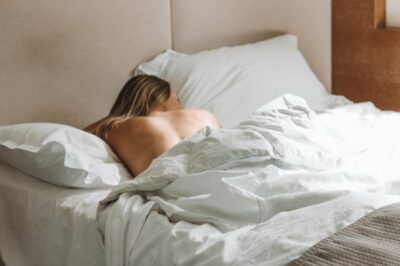Table of Contents[Hide][Show]
Imagine you’re sitting comfortably in the forest, tending the fire outside your home, listening to the night sounds around you. You smell fresh air, smoke, maybe the after-leavings of a fresh-caught dinner that you spent the day gathering, and you’re surrounded by the laughter of your entire tribe.
What are you feeling? Calm? Do you feel connected to your environment and grateful for the treats from our planet? Good. That’s how our ancestors lived their lives, and that’s what we want to talk about today.
They hunted and gathered, built their shelters, tended their fires, and supported each other. While beauty wasn’t their top priority, staying health was and we know now that beauty and attraction are largely interconnected with our health.
It makes sense, right? Our ancestors had to further our species, and the best way to do that is to carry on the strongest, healthiest genes. This type of natural selection is two-fold in our species. On the one hand, the strongest humans survived challenges like temperature, weather, famine, disease, and long periods of travel over unknown terrain. On the other hand, we’re inclined to find the healthiest humans the most attractive.
We have keen senses of smell that help us to find a mate and to tell if that match is ill (think about it, you can smell a sickness) and our eyes are trained to find beauty in symmetry. In our evolving eye, a symmetrical person is without obvious deformity, likely has healthy genes and is more likely to survive the hardships of living. In ancient times, your beauty was pragmatic, and that made it essential.
While this isn’t of immediate concern in our current climate of existence (apocalypse pending), it certainly mattered very much just a few hundred years ago—and real evolution takes time.
So how did our ancestors stay at the tip-top of health and keep their beauty up? Here’s a few ways that the ancients took care of their bodies and consequently, let their inner beauty shine.
Massage
This is the first true form of healing. Because the ancestors were an active bunch, they had sore muscles. How natural is it to rub your calves after a long day hiking? Or create a sensual experience with a partner through mutual massage?
That’s because it’s in your genes.
Massage is a wonderful tool to help keep your body calm, it relaxes your muscles and lets you release tension so that you can keep on that workout or move without pain. It also has the ability to move and release stuck energies in the body, both physically and emotionally. It can release toxins that our bodies have been storing and allow us to stimulate and remove things we don’t need.
When our muscles are tense, or we’re feeling stuck emotionally, we can be holding ourselves back from owning our radiant beauty. Our ancestors were much more in tune with the energies of their entire tribe than we tend to be today, and they knew that a body under duress doesn’t work at its full potential, and can’t reach its optimal beauty.
DIY: How to Do an At-Home Facial
Scientific Studies in Aromatherapy (Does it Really Work?)
DIY: How to make Natural Bug Repellent using Essential Oils
Regular Massage At Home
The most common thing I hear when I suggest regular massage to my clients is that it’s too expensive. And yes, the cost can be a huge barrier for a lot of people to get into a regular massage therapy practice, but this is actually really easy to supplement at home.
You can trade with a friend or partner. This is really fun because it’s a learning experience for both of you. Everyone has a different massage style and different needs. You can ask where they’re sore and practice pushing different ways and at different levels of pressure. Just make sure you’re openly communicating about the massage and the healing so you both get what you need.
No partner? No problem. Rolling out kinks on a foam roller can really do the trick, or there are all sorts of easy at-home massage devices at your local sports store (somehow I always end up in that section). An even less expensive tip?
Get a couple of tennis balls and put them in an old sock. I (shamelessly) stole a couple of tennis balls from my dog’s stash and put them into a sock that lost its mate. Oh man, can I tell you how good that feels between my shoulder blades after an upper body workout? Or how about those abductor muscles of the leg after a bike ride—I lay right on my make-shift massager and work out those kinks. Seriously, try it.
Steam
Fire is the most important thing to a tribe—it could literally mean life or death for everyone. Since the earliest humans were nomads, many ancient gatherings would have a specific fire-bearer (and often times a back up) to make sure to get their flame from one home to the next, never letting the flame die out.
They also had great respect for our planet and understood the destruction that a run-away fire could cause. So when a tribe moved on, they put out the flames, many times with its most effective rival, water. You see where I’m going with this right? Putting out a fire with water makes steam.
That steam heals and our ancestors knew it right away. Even now there are whole schools of healing dedicated to the healing powers of steam bathing but back then they were just feeling it opening their lungs, burrowing into their skin, and helping them sweat out toxins.
They felt it so strongly that they created whole ceremonies to smoke and steam. They built shelters with a center hole, created a fire in the center and let it burn to coals, then they slowly poured water over the coals to create steam. They added herbs to the coals that filled the air with good-smelling healing powers.
Steam bath at home
Luckily, you don’t have to work so hard to build a shelter to hold your steam. (Though if you wanted to do that, could you send an invite?) This is a really simple health and beauty ritual that will keep your skin lively and beautiful by opening your pores and letting you fully release the toxins in your skin along with breathing steam deeply into the lungs, which can help clean out those deep pockets where today’s air pollution and environmental stressors can get stuck.
What you need:
- A pot of boiling/simmering water
- A towel
- Herbs or essential oils of your choice
Directions:
Put the water on to boil.
If you’re using dry herbs for your steam, you can place these into your pot but if you’re using essential oils, you’ll want to wait until your water is steaming because the heat will burn off the oils pretty quickly.
When your water is simmering or boiling (depending on the amount of steam you like) put the towel over your head and over the pot—just be careful not to burn your face or catch the towel on fire.
Breathe in and out steadily, slowly, and fully for a few minutes—I like to try for two minutes, then five minutes, then ten (I never make it to ten, but it feels great to try). Remember that this is a way to relax so if you’re struggling or uncomfortable, try backing away or turning the temperature down.
After your steam, be gentle with your skin, your pores are open and your skin will be sensitive. Usually a nice cold rinse is all you’ll need.
A few awesome herbs or essential oils to add to your steam:
Mint. It smells so good and helps take the steam deep into your lungs to help break up stuck gunk. Mint has cleansing properties that can sink deeply into pores and help clarify skin.
Eucalyptus. This is an ultimate steam herb. Eucalyptus is super cleansing and it has a scent that stimulates and invigorates everything it touches. This is especially lovely if you have a chest cold.
Lavender. Cleansing and calming, lavender is the plant ally with the most to offer in a steam that’s opening your pores. It’s a true aromatherapeutic experience that leaves you relaxed and comfortable after a long day.
Mud
Those of you that love the outdoors already know this, but the nomadic lifestyle can get a little muddy. By the end of a day hike in the wet season, there’s a good chance you’re covered in the stuff so imagine that you’re living outside—being covered in Earth was part of our ancestor’s lifestyle.
They purposefully used mud to protect from the sun and as a salve for wounds but there was an additional benefit of the mud that they might not have realized—it kept their skin shining, toxin free, and beautiful.
Using mud in skin care helps to pull toxins from the skin and soak up extra natural oils. Natural muds and clays are also exfoliating and add much needed minerals to the skin, offering a flawless finish and extra protection from the environment.
Mud Masks
I’m not telling you to go outside and roll in the mud or to cover yourself in clay for your sun protection on a hike (unless you’re into that kind of thing) but I am telling you to exfoliate and use a mud mask pretty regularly, especially if you have oily skin.
If you have oily skin, you want to exfoliate every couple of days with a product like the Kaolin Micro Exfoliant to help polish and give you a soft feel to your face. Follow it with a timeless product like the Purifying Mud Mask and you can feel like you’re one with your ancestors.


